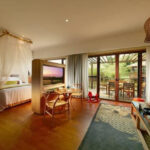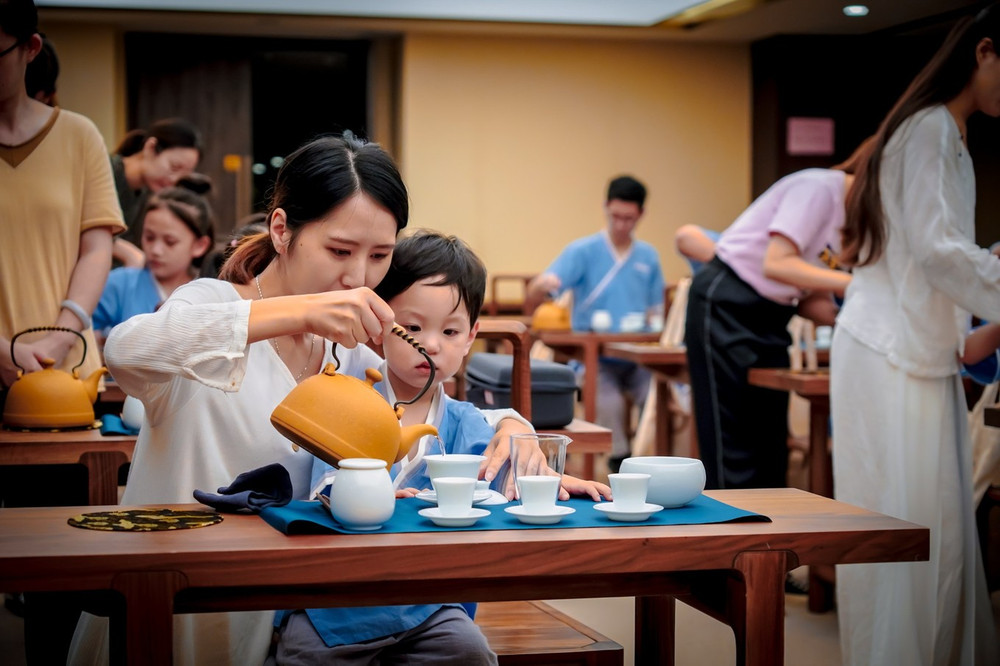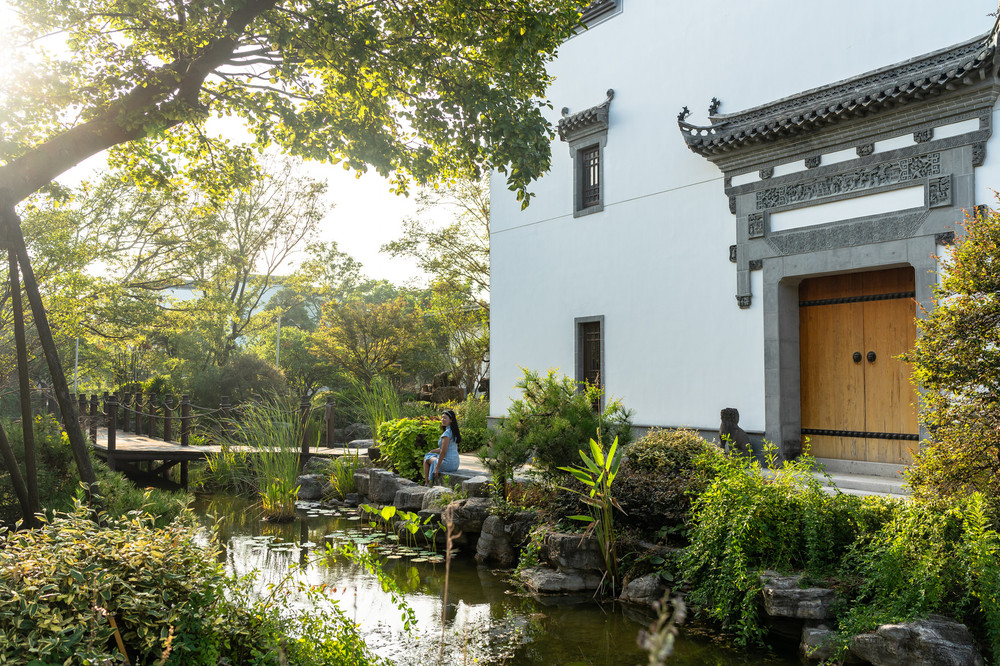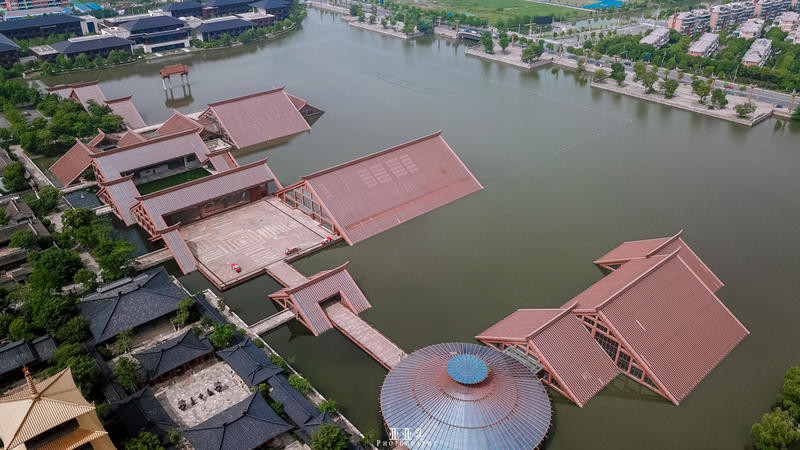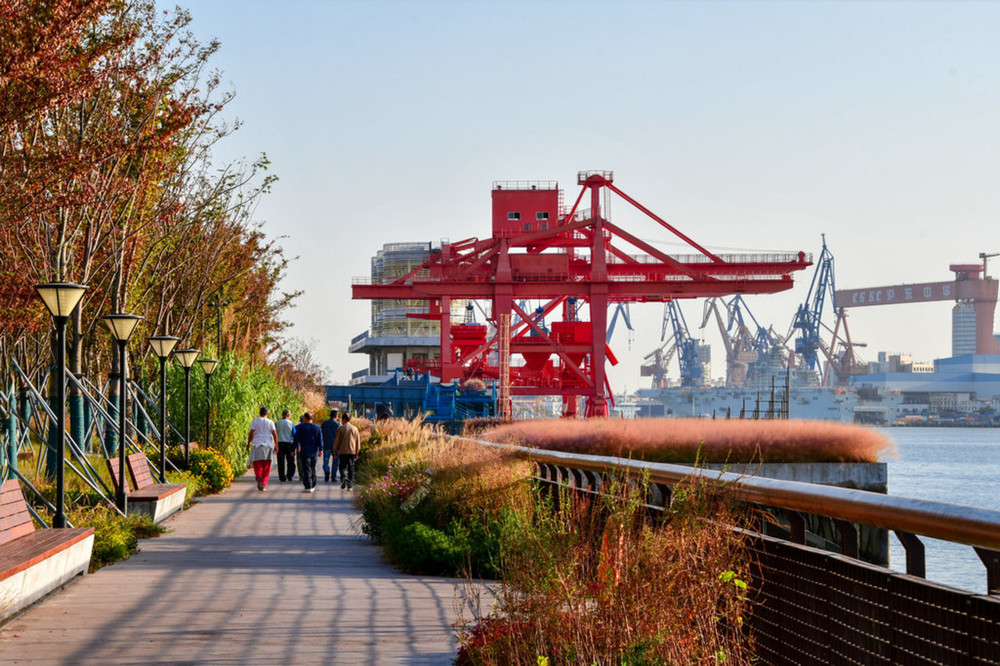Duration: 1 day. The author visited these places: Nanjing, Suzhou, Shanghai, Hangzhou.

**November 2nd**
We took the morning flight at 7:45 on ShangHai Airlines. The flight from Guangzhou to Nanjing Lukou Airport took an hour and a half. Then we took a twenty-five yuan airport shuttle bus to the final stop at the National Defense Park and a taxi to the Hanting Hotel (Xuanwu Lake Branch). After checking in before eleven, we took a taxi to the Lion Bridge Food Street on Hunan Road. Lunch was at Nanjing Dapaidang. Afterwards, we took a taxi to the Presidential Palace. After leaving the Presidential Palace around four o’clock, we took a taxi to Zhonghua Gate. After walking around the city gate, we took a taxi to Qinhuai River. We had dinner at the duck blood soup and rice noodle shop opposite the Qinhuai River Snack Plaza. After strolling along Qinhuai River until eight o’clock, we returned to our hotel.
Published on November 22, 2008, at 23:38. Heavenly Journey: A Detailed Travelogue of East China’s Four Cities. ‘Paradise above, Suzhou and Hangzhou below.’ The trip to East China in late autumn and early winter, which ended in the first week of November, is still fresh in my memory. I would like to record the details of Nanjing, Suzhou, Shanghai, and Hangzhou before the memories fade, to serve as a reference for your travels. The trip took place from November 2nd to 8th, departing from Guangzhou, for a total of seven days and six nights, with four people traveling. Since two of them were elderly over 60, we chose city sightseeing tours focusing on urban attractions, with an average cost of about three thousand yuan per person.I thought it would take about ten minutes to walk to the subway, but it turned out to be more than twenty minutes, quite tiring. Fortunately, once on the subway, we arrived at the hotel without further detours.
November 3rd: We woke up early and after having breakfast at Yonghe Soy Milk opposite the hotel, we took a taxi at eight-thirty to the Ming Xiaoling in the Zhongshan Scenic Area.
The Zhongshan Scenic Area is very large and there are many scenic spots. We only chose two of them, Ming Xiaoling Mausoleum and Sun Yat-sen Mausoleum. The tickets are extremely expensive, 70 yuan and 80 yuan respectively. We bought a combo ticket for 140 yuan. Presenting the Ctrip VIP card, it costs 130 yuan. Here’s a note. Ctrip VIP is relatively useful in East China. Tickets in Nanjing have a 20% discount. You can also get discounts at some restaurants. But we didn’t think of this until our last meal in Hangzhou. It’s too late. Also remind other netizens to pay attention.
Ming Xiaoling Mausoleum is mainly to see the Sacred Way. There are two sections. One section is the Beast Way, all filled with stone statues of animals. The other section is the Human Way, all filled with statues of people. We start from the middle. First walk the Beast Way, then circle around Meihua Mountain and directly go to the mausoleum area. Unfortunately, the mausoleum of Zhu Yuanzhang at the innermost part is under maintenance and cannot be entered. After coming out, walk the Human Way, and then take an electric car to Sun Yat-sen Mausoleum for 10 yuan per person. Here, compared to the quiet and less crowded place, there are many tourists. There are many tour groups. Taking photos at the gate and the wordless tombstone is almost like a group photo. For those on independent trips, if possible, it is recommended to go to Sun Yat-sen Mausoleum first and then Ming Xiaoling Mausoleum to avoid the peak of tourist flow.
Both Ming Xiaoling Mausoleum and Sun Yat-sen Mausoleum have excellent feng shui. Ming Xiaoling Mausoleum has a historical exhibition room that explains in detail why Zhu Yuanzhang chose this place as his eternal resting place during his lifetime. Moreover, it was surveyed by Liu Ji, the descendant of Guiguzi and the number one feng shui master in the Ming Dynasty. It really has the pattern of ‘green dragon on the left, white tiger on the right, vermilion bird in front and black tortoise at the back’. Similarly, Sun Yat-sen Mausoleum also faces the Yangtze River against the mountain. The scene of Jinling City is unobstructed. It truly has the imposing manner of ‘tigers crouching and dragons coiling’. In the small garden behind the mausoleum, there are picture materials that introduce in detail the original construction process. It is worth seeing.
However, these two feng shui treasure lands did not bring us good luck. After my wife came down from the small garden of Sun Yat-sen Mausoleum and wanted to take a short rest under the shade of a tree, a sudden change occurred. The middle finger of her left hand was severely stung by a hornet. The pain was so intense that her finger was numb and without sensation for a while. Seeing this scene, the two elders were panicked and resorted to hasty measures. They immediately went down the mountain to the service center of the scenic area to find a doctor. Who would have thought that in such a large scenic area, there wasn’t even a duty doctor. The staff found some snakebite medicine and applied it to her, but the pain remained. And when I was signing, I also found that three or four people had had the same experience in the past few days. So we hurriedly took a taxi to the nearest Nanjing Military Region General Hospital to see the emergency department. It was nearly one o’clock when we arrived. The doctor prescribed the same snakebite medicine used on the mountain and a little oral medicine. It turned out that we were overreacting. However, my wife’s wound fully recovered only after two days. After the false alarm, we immediately felt hungry and walked to a century-old noodle shop nearby for lunch. The noodles were very delicious. I forgot the name. Anyway, it’s near a large intersection coming out of Nanjing General Hospital.
After lunch, it was already past two o’clock. We discussed and decided to visit the Nanjing Yangtze River Bridge, which we had learned about in elementary school textbooks. It was quite a distance by taxi, and the driver was unwilling to take us onto the bridge, so we had to take a bus for one stop atThe four of us rented an electric boat for 50 yuan and cruised for an hour. We watched the setting sun, ancient grass, and the ancient capital’s nobility now gone, leaving only Xuanwu Lake remaining.
After leaving Xuanwu Lake, we went to the opposite railway station to purchase high-speed train tickets for Suzhou for the next day. The tickets cost 67 yuan per person, and the departure time is 8:30 AM. Afterwards, we took a taxi to Lion Bridge for dinner. This time we dined at Lion Building, which is more expensive than Nanjing’s food stalls but offers a better environment and quality of food. After dinner, we took a taxi back to the hotel.
On November 4th: We woke up early as usual and had breakfast at Yonghe Soy Milk across the street. Then we took the subway to the railway station. The high-speed train was very fast, and we arrived at Suzhou Station around ten o’clock. After getting off, we bought high-speed train tickets for Shanghai for the next day. The tickets cost 18 yuan, and the departure time is a little after three o’clock. We immediately took a taxi to the Hanting Hotel on Guo Yin Alley. It took about ten minutes to reach. The hotel had the same decoration style, but the room was much larger than in Nanjing. After dropping our luggage, we couldn’t wait to go to Guanqian Road Pedestrian Street to find food. The hotel is very close to Guanqian, just a five-minute walk. And like all pedestrian streets, we didn’t take long to find a place to eat at Songhe Building in Taijian Alley for lunch. Here we had the most extravagant meal of our entire trip. Two Yangcheng Lake hairy crabs, 118 yuan each, and a pine nut mandarin fish, also over a hundred yuan. But both were very delicious. The century-old shop was indeed different. We were very full. Pickled cucumber and other snacks were also good. After lunch, we strolled around the pedestrian street for a while. Then we took a taxi to Tiger Hill. The entrance fee is 40 yuan. The main attraction here is the first leaning tower in China – Tiger Hill Tower. Whose real name I’ve forgotten. The tower stands over the tomb of King Helü of Wu. When the tomb was excavated, part of the tower’s foundation was damaged, causing the tower to lean. The tower is on the mountaintop with a nice view. There are other attractions like the Sword Testing Stone and Sun Tzu’s Drilling Stone. But the Sword Pond, where the famous swords of Gan Jiang and Mo Ye are said to be buried, had someone making rubbings and had wooden scaffolding set up, which affected the view. After Tiger Hill, we took a taxi to the Liu Garden, one of the four famous gardens in China. It is very close, about ten minutes away by car.
It was already four o’clock when I arrived at the Lingering Garden. The ticket costs 50 yuan. I feel that the entrance fees of scenic spots in East China are extremely expensive. Personally, I am not interested in gardens. However, since I have paid the money, I wandered around randomly, covering every corner of the garden, not even missing a single toilet. Here is a Taihu stone, the treasure of the garden. It is more than 6 meters high and weighs 5 tons. Mi Fu’s comments on Taihu stones – ‘thin, transparent, and leaky’ – are clearly visible. It’s a pity it’s not in my home so I can’t observe it carefully. After coming out, I took a taxi to Shantang Street. Let me explain here. The seven-mile Shantang Street in Suzhou starts from Tiger Hill and extends all the way to the old urban area of Suzhou. It is seven miles long, but the main section is near the Shichang Pedestrian Street. There is an archway. Along both sides of the river are antique buildings, but what is sold are souvenirs produced by modern machines. Personally, I think it’s not worth visiting. After strolling around, I found a place to eat on the pedestrian street. Then I strolled around a shopping mall and returned to the hotel.
On November 5th: After getting up in the morning, I first went to a Huang’s something dumpling shop on Guanqian Street to have breakfast. It is also a century-old store. (Why are there so many century-old stores in East China? When you go to Shanghai and Hangzhou, there are also many). After coming out, affected by the southward movement of cold air, it started to rain. In the following days, we continued our heavenly trip in the cold wind and drizzle. Coming out of the pedestrian street, I originally planned to take a taxi to the Humble Administrator’s Garden. However, due to**A Day in Suzhou and Shanghai: A Personal Account**
**Hiring a Tour Guide in Suzhou**
Drawing on the experience of aimless wandering before, I decided to spend 50 yuan to hire a tour guide to take us on a tour. This decision proved to be a wise one, as it eliminated the worry of getting lost. With the guide’s help, we heard many stories and saw several sceneries that can only be seen through window grilles. Without her pointing them out, I really wouldn’t have known.
**Exploring Suzhou’s Attractions**
After coming out of the Humble Administrator’s Garden, I visited the adjacent Zhongwang Mansion and the Suzhou Museum. These are free attractions, but the main focus was the Suzhou Museum. It was designed by the internationally renowned Chinese-American architectural master I.M. Pei, who hails from Suzhou. Jiangnan is truly a place of talents, as evidenced by the beautiful actress Carina Lau, also from Suzhou.
**Lunch and Departure from Suzhou**
After leaving the museum, it was nearly twelve o’clock. I took a taxi back to the hotel to check out and then had a meal in the Cantonese restaurant of the hotel. The food was okay, and there was a discount with the room card, but the restaurant refused to honor it since we checked out first. Despite making a complaint, there was no way to change their minds.
**Travel to Shanghai**
After having the meal, I waited until two o’clock and took a taxi to the railway station. Unexpectedly, the bullet train was also delayed, not leaving until three thirty. The journey was smooth, and in just over half an hour, we arrived at Shanghai Railway Station.
**Preparations for the Next Day**
After coming out of the station, I first bought the ticket for the bullet train to Hangzhou the next day, costing 62 yuan. The train leaves at three o’clock, and there is only this one train leaving from Shanghai Station. For trains at other times, you have to go to Shanghai South Railway Station.
**Finding Accommodation in Shanghai**
After purchasing the tickets, I took the subway to the Shangfu Starway Hotel on Guizhou Road, near Nanjing Road Pedestrian Street. The population of Shanghai is overwhelming, even during working hours the subway is packed. The People’s Square station, adjacent to Nanjing Road, is enormous, boasting a total of 20 exits. After a full circle, I finally found exit number 19, which leads directly across from the entrance of Nanjing Road Pedestrian Street.
**Local Interactions and Challenges**
From the moment I started my subway journey, I sensed the indifference and contempt from the locals towards outsiders. When inquiring at the subway station service center about the nearest exit to Nanjing Road Pedestrian Street, they were clearly impatient and deceptively told me it was exit number one. The difference between the first and the nineteenth exit is quite significant. In the end, I relied on my own judgment to find the correct exit.
**Shopping Experience**
The shopping experience in the mall was similar; the matrons working as sales assistants were constantly urging me to hurry up and pay, not even allowing me to try on clothes. Once, while shopping for a woolen sweater, the saleswoman said, ‘Stop choosing, I’m about to get off work, don’t waste my time.’ It was quite an attitude.
**Hotel and Dining Experience**
Speaking of which, once out of the subway exit and walking across, you’ll find yourself on the pedestrian street. The hotel is located at the intersection of Guizhou Road and Nanjing Road, just a stone’s throw away from the pedestrian street. There’s a large advertisement sign on the street that’s hard to miss. However, the hotel lobby is surprisingly small, about the size of a mini bar, and the elevator is located on the second floor, just as网友们 have mentioned, it can only accommodate two people at a time, incredibly small. The room size is similar to that of the Hanting Hotel in Nanjing, an almost century-old building, and it was the most expensive night of our trip to East China, costing 278 yuan.
**Dinner and Evening Stroll**
After settling in, hunger set in. At five o’clock, I went downstairs to stroll the pedestrian street and look for a place to eat. Everyone wanted to eat Western cuisine, so we searched along Nanjing Road, but the only option was several branches of a chain restaurant. With no other choice and exhaustion setting in, we went to the closest one we saw. The cost was high, and the service was even worse, but we managed to embarrass ourselves in front of the sophisticated people of Shanghai. My parents, tired from walking, took off their shoes and socks to rest, but they were sitting outside, and a polite waitress reminded them to put them back on to avoid affecting the mood of the other guests, causing us to blush with embarrassment. After all, we were from a small place and didn’t understand the etiquette.
**A Walk to the Bund**
After dinner, rejuvenated, we continued to stroll along the pedestrian street, walking all the way to the Bund in Shanghai. Gazing at the opposite side of the Huangpu River, the Oriental Pearl Tower and the Lujiazui financial district were illuminated, and the century-old Bund architecture group was reborn in the glow of the lights, reminiscent of its former glory. However, the lighting on the Pudong side was much less impressive. Compared to Hong Kong’s Central district, after more than a decade of construction, I personally feel that it still doesn’t match the CBD of Guangzhou Tianhe North.It was already past eight o’clock when visiting the Bund.
Took a taxi back to the pedestrian street and did some more shopping. Then, carrying large and small bags, I returned to the hotel.
(Write up to here for now as the first part. The second part will be posted tomorrow.)




